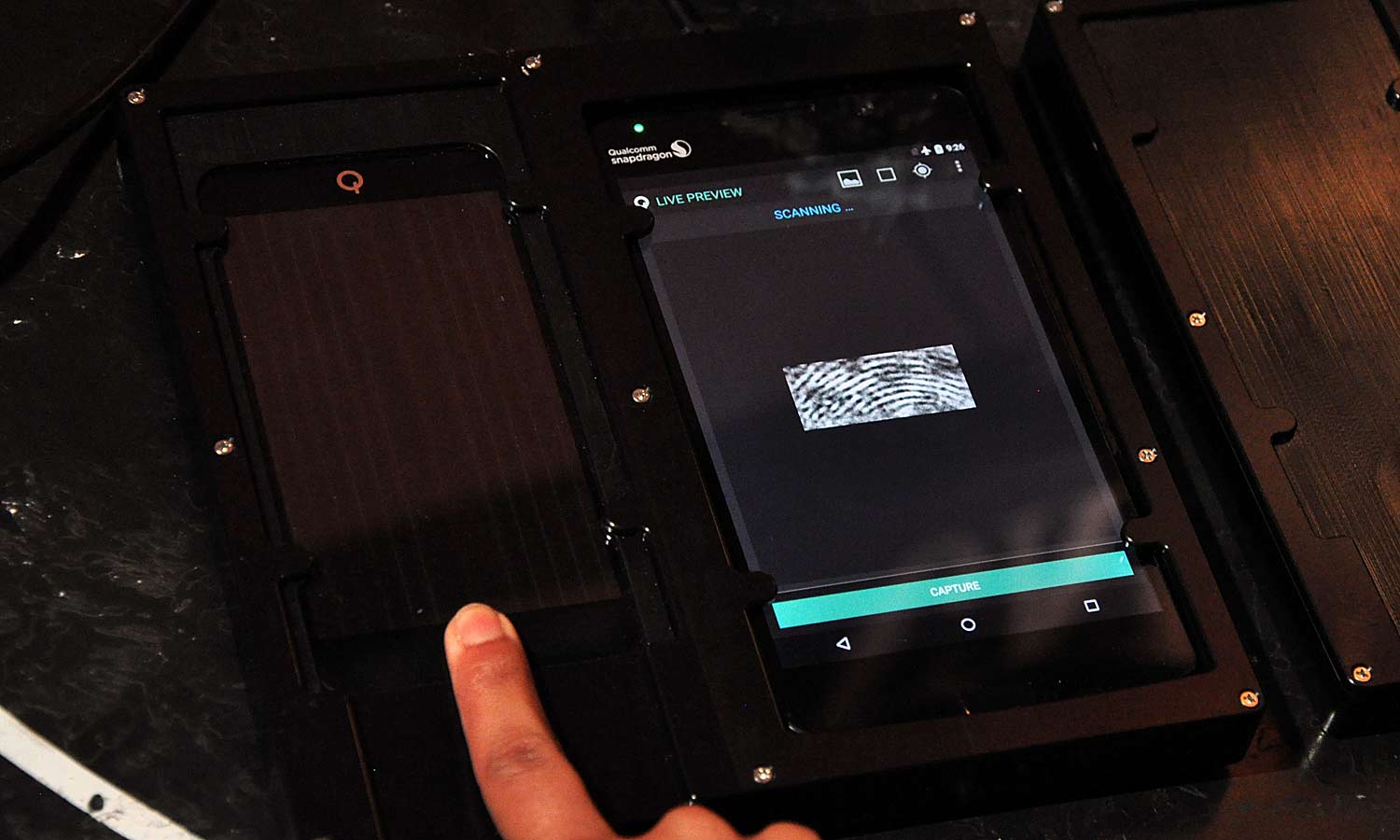What is the Snapdragon 820? A Guide to Qualcomm’s New Chip
The Snapdragon 820 is Qualcomm's most powerful chip yet, offering tons of performance and energy-saving benefits to the next generation of smartphones.

The term Qualcomm Snapdragon might not be a household name to you, but it represents a piece of technology that powers almost every mainstream smartphone on the market. To help explain just what Snapdragon does, and to prepare you for the next generation of mobile phones, here’s a guide to Qualcomm's next flagship mobile processor: the Snapdragon 820.
Update: Samsung Electronics announced that it has begun mass production of chips using its second generation 14nm FinFET process which includes Qualcomm's Snapdragon 820. Samsung Electronics claims the new fabrication method offers even better performance and power efficiency over first gen chips such as Samsung's Exynos 7 series chips.
Why You Should Care
Qualcomm is the market leader when it comes to mobile processors and currently owns about 85 percent of the market for mobile chipsets. Its chips can be found in a huge range of devices including smartwatches, cameras and, most notably, mobile phones. Its previous top-of-the-line system on a chip, the Snapdragon 810, was featured in a variety of current flagship phones such as the HTC One M9, Sony Xperia Z5 and the OnePlus 2. As the higher number implies, the Snapdragon 820 will likely power the next generation of mainstream phones; rumors are already swirling that it will be utilized in Samsung’s next major phone, the Galaxy S7.
MORE: OnePlus 2 Review
What is the Snapdragon 820?

Modern smartphone chips are much more than simple CPUs. They contain multiple processors - some with multiple cores - that do different jobs all packaged into a single system on a chip (SoC), with the grouping of various processors working together known as heterogeneous computing. Specifically, the Snapdragon 820 is a chip comprised of five main components which are either new or have been improved for Qualcomm’s next SoC. These components are the Kryo CPU, Adreno 530 GPU, Hexagon 680 DSP, Qualcomm Spectra ISP and the X12 LTE Modem.
The Kryo CPU: Four Cores are Better Than Eight
The Kryo CPU is a significant departure from the CPU we saw in the Snapdragon 810. This is because Kryo features a custom-built quad-core setup running at 2.2 GHz versus the Cortex A57/53 octa-core arrangement we saw in the Snapdragon 810’s CPU. The size of the processor has also shrunk to 14 nanometers in the 820 (the 810 was 20 nm) using Samsung’s FinFet manufacturing process. In the end, this results in what Qualcomm’s claims is two times the performance and two times the power efficiency when compared to the Snapdragon 810. The Kryo CPU also works in tandem with Qualcomm’s Symphony system manager to automatically find the right balance between system power and heat management so you’ll get speedy performance without burning a hole in your pocket.
The Adreno 530 GPU: A Solid Step Forward

While the new performance claims for the Adreno 530 GPU aren’t quite as impressive as the CPU, Qualcomm’s says that users can expect both 40 percent faster graphics and 40 percent less power consumption from when it comes to gaming on the Snapdragon 820. This makes it easier for smartphones to power devices with dense 4K displays, which Qualcomm says is essential to making things like a good VR experience possible.
Get instant access to breaking news, the hottest reviews, great deals and helpful tips.
Hexagon 680 DSP and Spectra ISP: Going after Low-light

The Hexagon 680 DSP (digital signal processor) and Spectra ISP (image signal processor) work together to produce images that are brighter and less noisy, especially in low-light scenarios. The Spectra ISP is especially important as it’s the first of its kind for Qualcomm and it works together with the DSP to bring out the light and help you get the best quality out of your images. In the photo above, which has been provided by Qualcomm, you can see how the people in the foreground are much clearer without the bright background colors being sacrificed. At the Snapdragon 820 launch event, Qualcomm also showed off how even on a live 4K video at 30 fps, the Spectra ISP was also able to significantly reduce noise and grain to create a clearer video. Spectra also features 14-bit processing, which means each photo contains more data than what you’d get from a Snapdragon 810.

One new interesting camera feature is Snapdragon Scene Detect, which uses machine learning to recognize objects in your pictures and automatically embed those photos with tags and metadata for easier searching and organization later on. In the photo above, you can see the tags being identified in the top left of the display. Scene Detect also allows the 820 to learn from pictures you have taken, so if there's a tag that doesn't get added automatically, you may be able to add an object to the list of what the 820 can recognize.
MORE: Our Favorite Smartphone Cameras
X12 LTE Modem: Cat 12 Mobile Data and 802.11ad Wi-Fi

Modems might be one of the least exciting parts about tech, but often one of the most important because they control how fast you can communicate with the rest of the world. With its X12 LTE modem, the Snapdragon 820 offers significant upgrades on both fronts. For cellular data, the 820 offers Cat 12 performance, meaning you can look forward to download speeds up to 600 Mbps and uploads up to 150 Mbps. That’s a 33 percent improvement for downloads and a whopping 200 percent improvement for uploads versus the 810, which means that not only will it be easier to stream content from YouTube or Netflix, but broadcasting yourself on Periscope should be smoother as well.
When it comes to Wi-Fi, the X12 modem now features support for the 802.11ad wireless spec, which offers a max throughput of 4.6 Gbps. The modem also features support for multiple user MIMO wireless communication, which means that you should get better Wi-Fi performance especially in places packed with a lot of connected devices such as a coffee shop or library.
What’s Left
There are plenty of other features Qualcomm’s next chip has to offer. The processor features Quick Charge 3.0, which supports a wider range of amps and voltages so you can charge a typical phone from dead to 80 percent battery in just 35 minutes.

Then there’s the new Assertive Display tech, which uses an ambient light sensor to automatically adjust what’s on the screen for easier viewing even outdoors, Qualcomm Immersive Audio for simulated surround sound when using both headphones and speakers, and Snapdragon Sense ID which gives you a more accurate and more secure fingerprint reader. Let's not forget about a better hand-off system for Wi-Fi calls, and TruSignal Antenna Boost, which promises less dropped calls and less energy drain.
The big caveat with the 820 and most other smartphone chips is that many of these features need to be supported by either the phone maker, your wireless carrier, or both. Qualcomm provides the tools for developers to use, but it's up to phone makers to actually put them into use.
While there’s still no official timetable for when we’ll see Snapdragon 820 devices in stores, it’s probably a safe bet that there will be a number of phones sporting Qualcomm’s next chip debuting at Mobile World Congress 2016 in late February.
Sam is a Senior Writer at Engadget and previously worked at Gizmodo as a Senior Reporter. Before that, he worked at Tom's Guide and Laptop Mag as a Staff Writer and Senior Product Review Analyst, overseeing benchmarks and testing for countless product reviews. He was also an archery instructor and a penguin trainer too (really).
